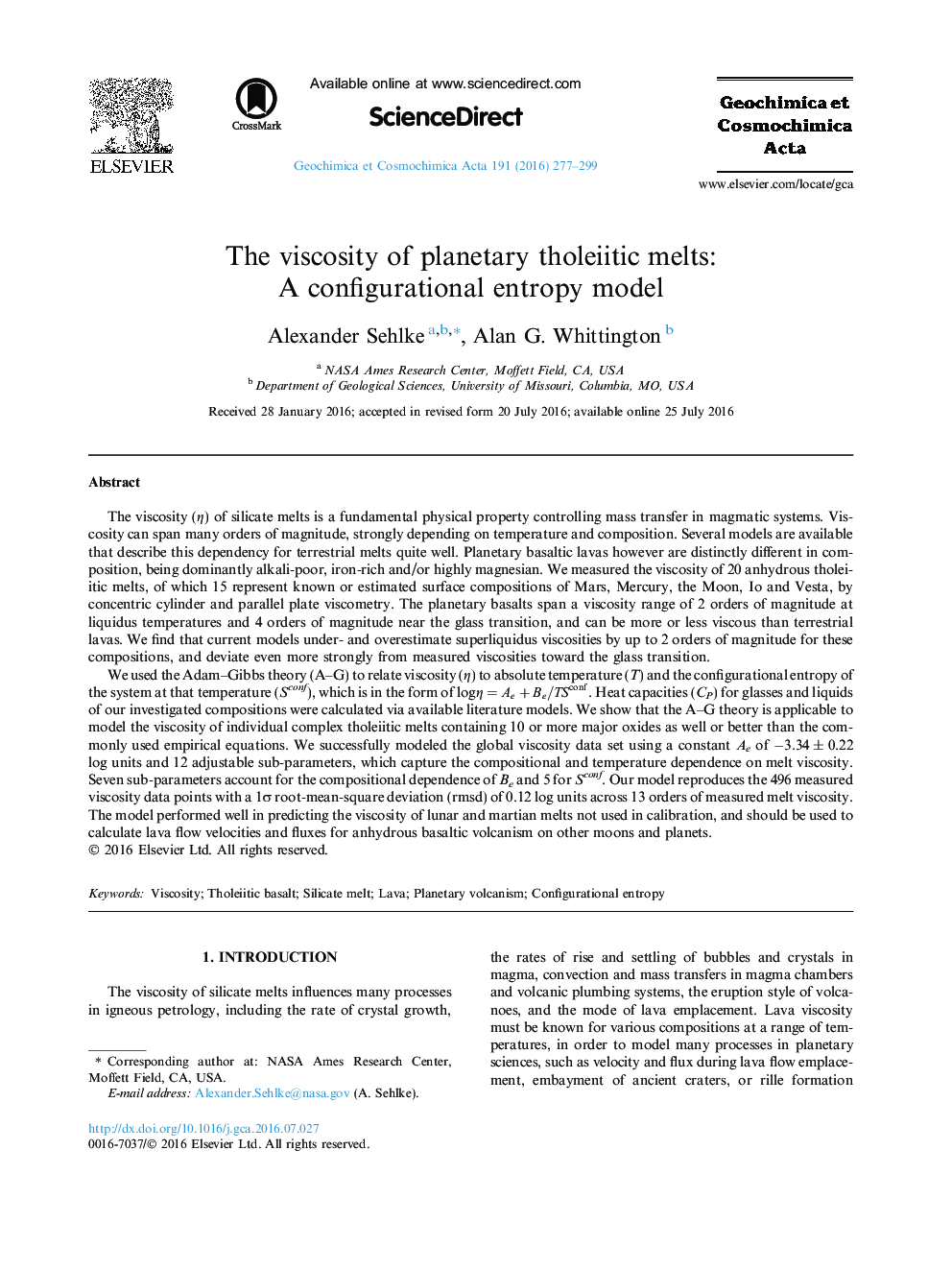| کد مقاله | کد نشریه | سال انتشار | مقاله انگلیسی | نسخه تمام متن |
|---|---|---|---|---|
| 6437203 | 1637966 | 2016 | 23 صفحه PDF | دانلود رایگان |
- Viscosity of 20 tholeiitic liquids were measured over the range 1 to 1012 Pa s.
- Liquid viscosities vary with composition by two orders of magnitude or more.
- Presented model predicts liquid viscosities with a (1Ï) rmsd of 0.12 log units.
- Lunar mare basalt is the most fluid but low lunar gravity reduces flow velocity
The viscosity (η) of silicate melts is a fundamental physical property controlling mass transfer in magmatic systems. Viscosity can span many orders of magnitude, strongly depending on temperature and composition. Several models are available that describe this dependency for terrestrial melts quite well. Planetary basaltic lavas however are distinctly different in composition, being dominantly alkali-poor, iron-rich and/or highly magnesian. We measured the viscosity of 20 anhydrous tholeiitic melts, of which 15 represent known or estimated surface compositions of Mars, Mercury, the Moon, Io and Vesta, by concentric cylinder and parallel plate viscometry. The planetary basalts span a viscosity range of 2 orders of magnitude at liquidus temperatures and 4 orders of magnitude near the glass transition, and can be more or less viscous than terrestrial lavas. We find that current models under- and overestimate superliquidus viscosities by up to 2 orders of magnitude for these compositions, and deviate even more strongly from measured viscosities toward the glass transition.We used the Adam-Gibbs theory (A-G) to relate viscosity (η) to absolute temperature (T) and the configurational entropy of the system at that temperature (Sconf), which is in the form of logη=Ae+Be/TSconf. Heat capacities (CP) for glasses and liquids of our investigated compositions were calculated via available literature models. We show that the A-G theory is applicable to model the viscosity of individual complex tholeiitic melts containing 10 or more major oxides as well or better than the commonly used empirical equations. We successfully modeled the global viscosity data set using a constant Ae of â3.34 ± 0.22 log units and 12 adjustable sub-parameters, which capture the compositional and temperature dependence on melt viscosity. Seven sub-parameters account for the compositional dependence of Be and 5 for Sconf. Our model reproduces the 496 measured viscosity data points with a 1Ï root-mean-square deviation (rmsd) of 0.12 log units across 13 orders of measured melt viscosity. The model performed well in predicting the viscosity of lunar and martian melts not used in calibration, and should be used to calculate lava flow velocities and fluxes for anhydrous basaltic volcanism on other moons and planets.
Journal: Geochimica et Cosmochimica Acta - Volume 191, 15 October 2016, Pages 277-299
